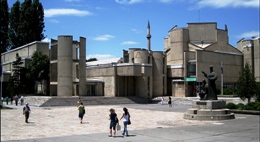
| Education System in North Macedonia |
Education in Macedonia follows a 3-tier process, namely elementary, secondary and then tertiary education. The former process takes 8 years from age 7 to 15, culminating in a certificate for completed elementary education or svidetelstvo za zavreno osnovno obrazovanie.
Secondary school that follows has options including classical high school education, vocational education, art high school education, and high school education for those with disabilities. Classical and arts pupils study for 4 years at the end of which they take final examinations for a secondary school leaving certificate, or svidetelstvo za zavreno sredno that may entitle them to apply to go on to university. Vocational students have a choice of attending for 2, 3 and even 4 years according to the level of qualification that they desire.
The system of ongoing education for adults is well-established. A variety of institutions present courses ranging from completing secondary education through to programs in a wide range of subjects - for example information technology, foreign languages, management and business.
 Higher education is available at colleges and other pedagogical academies in the form of 2-year courses.
Higher education is available at colleges and other pedagogical academies in the form of 2-year courses.
Nearly half of all classical secondary students enroll at 1 of 2 universities, namely Saint Clement of Ohrid University founded in 1979, and Saints Cyril and Methodius University established in 1946 and illustrated here.
It has 25 faculties and 11 research institutes, over 50,000 students and approximately 3,000 research and teaching staff.